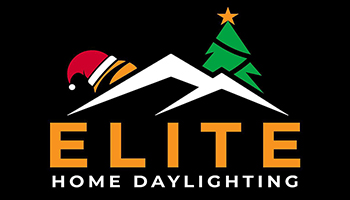On average, solar tubes cost $750 in the year 2022, with prices ranging from $500 to $1,000. Meanwhile, traditional skylights will cost an average of $2,000. If you are searching online for “how much do solar tubes cost,” then this post will be your guide.
Solar Tube Cost
Solar tubes will cost between $500-$1,000, depending on which professional installation service is chosen. Traditional skylights are much more expensive, costing an average of $2,000. You may be able to handle installation yourself if you decide to purchase a kit that costs between $200-$400. Unlike traditional skylights, solar lights do not need any additional drywall.
*This is not an actual quote. Contact Elite Home Daylighting Systems today for more information.
Solar Tube And Skylight Cost Comparison
Solar tubes will cost between $500-$1,000, depending on which professional installation service is chosen. Traditional skylights are much more expensive, costing an average of $2,000. You may be able to handle installation yourself if you decide to purchase a kit that costs between $200-$400. Unlike traditional skylights, solar lights do not need any additional drywall.
How Do Solar Tubes Work?
Commonly referred to as tubular skylights or sun tubes, solar tubes are constructed of sheet metal, including a polished interior. The interior acts as a continuous mirror, channeling light over the entire length of the tube. This will preserve the light’s intensity. Essentially, daylight is caught and captured at the roof, then transported within the home.
Weather-proof plastic globes on the roof cap the solar tubing. The tubing ends with a port-hole style diffuser within a room that rests below the ceiling. Light is captured by the globe on the roof. It is then spread by the diffuser, which generates a pure white glow for dramatic effect. Learn more about how solar tubes work by clicking here.
Where To Install Solar Tubes
These are few common areas where solar tubes are installed in homes:
The only places you do not want to install solar tubes would be above a screen. Installing these directly above a television or computer will cause a noticeable glare.
Should I Get Solar Tubes?
Homeowners choose to invest in solar tubes because they can help lower your electric bill instantly. Because of installation not requiring alterations to the home, there are seemingly no limitations when it comes to the location of these tubes inside a home. First, look around your attic for to make sure there is enough room to run a light tube. Any obstructions will need to be moved prior to installation.
Home Evaluations To Make Prior To Installation
- Roof slope: The majority of solar tube kits will provide flashing which may be installed to roofs that have a slope of 15 degrees (3-in-12 pitch) and up to 60 degrees (20-in-12 pitch).
- Roof framing space: The spacing of standard rafters are 16-inches center, with plenty of space for either a 10-inch to 14-inch light tube. However, if you find the rafters are 24-inches center, you have the option of custom ordering a 21-inch light tube that can cover 600 sq. ft.
- Roofing materials: Light tube kits have been designed for use with asphalt shingles, but can work well with shakes or wood shingles as well. There are flashing adapters available for tile or metal roofs.
- Location: Mounting globes on southwest sections of the roof provide the highest quality results. Lcoate an area that requires running of tube that is 14ft or less. When the globe is positioned above the tagert area directly, it may be able to reflect up to 985 of the exterior daylight. However, tubes that must twist or turn can slightly reduce the quality of light produced.
- Weather: If you’re located within an area with high humidity, then the interior of the tube may develop condensation and cause issues. By wrapping the light tube within R-19 or R-15 insulation, the condensation can be greatly reduced. Some solar tube manufacturers provide tubing sections that have small fans built within them for the purpose of removing the moist air and reducing or eliminating condensation. If you live within areas prone to hurricanes, you may want to opt for extra-hardy polycarbonate domes.
Solar Tube Installation In The East Valley
Elite Home Daylighting Systems offers tubular skylights and solar attic fan installation services to the entire Phoenix east valley. Service area includes Chandler, Gilbert, Mesa, Tempe & more! Contact us for a free quote today!
More Articles About Solar Tubes
- Why Go Solar In Arizona?
- How To Remove A Skylight
- Best Skylight Ideas For Your Home
- Roof Window Vs Skylight
- Solar Attic Fan Installation Cost
- 5 Benefits Of Sunlight Through Windows
- How Much Does It Cost To Install A Skylight?
- Sun Tunnel Vs Skylight
- Skylight Dome Replacement Guide
- Skylights Replacement Cost
- Skylights Near Me In East Valley Phoenix
- How Long Do Skylights Last
- Do Solar Attic Fans Work
- How To Clean Skylights In 5 Steps
- Everything You Need To Know About Solar Fans
- How To Install Solar Attic Fan
- Skylights Vs Solar Tubes: Costs, Pros And Cons
- How Much Do Solar Tubes Cost?
- 6 Easy Ways To Lower Your Electric Bill In Arizona
- Solar Attic Fans Pros And Cons
- Tubular Skylights Pros And Cons





